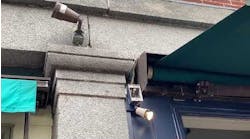As about half of the U.S. states ease restrictions and lift stay-at-home orders, essential workers like electricians are still hard at work to serve their customers. To protect themselves from COVID-19 while getting the job done, many are donning personal protective equipment (PPE) like face masks on the job.
While N95 masks are generally reserved for health care workers due to high demand, electricians in certain areas of the country must wear face protection while serving customers. For example, on April 7, the City of Los Angeles implemented a Worker Protection Order stating that employees of essential businesses—like electricians—must wear a face mask or face covering, according to a post by Pillsbury Winthrop Shaw Pittman LLP, an international law firm.
Face masks, however, are often hard to come by, and Americans are preventing the spread of the virus with surgical masks, bandanas, and even scarves. To help those in need, the Masks for Heroes Montana group is supplying masks to first responders and medical professionals in its local community. Nationwide, other groups are also coming together to provide PPE for the essential workforce.
As masks continue to be in short supply, researchers are exploring improved forms of protection. In a story on Stanford University’s Web site, John Xu describes the research behind a new protective face mask, which extracts and concentrates oxygen from the air to counteract the side effects of oxygen deficiency.
While Americans wait for new face masks to become readily available, they must find a way to properly wear homemade face coverings. The Centers for Disease Control and Prevention (CDC) offers these tips on the proper fit for masks on its website. According to the CDC, the masks must:
- fit snugly but comfortably against the side of the face
- be secured with ties or ear loops
- include multiple layers of fabric
- allow for breathing without restriction
- be able to be laundered and machine dried without damage or change to shape
In addition, individuals should try not to touch their eyes, nose, and mouth when removing their face covering and wash their hands immediately after removing it. For more information about COVID-19 and the latest updates, visit the CDC website.



